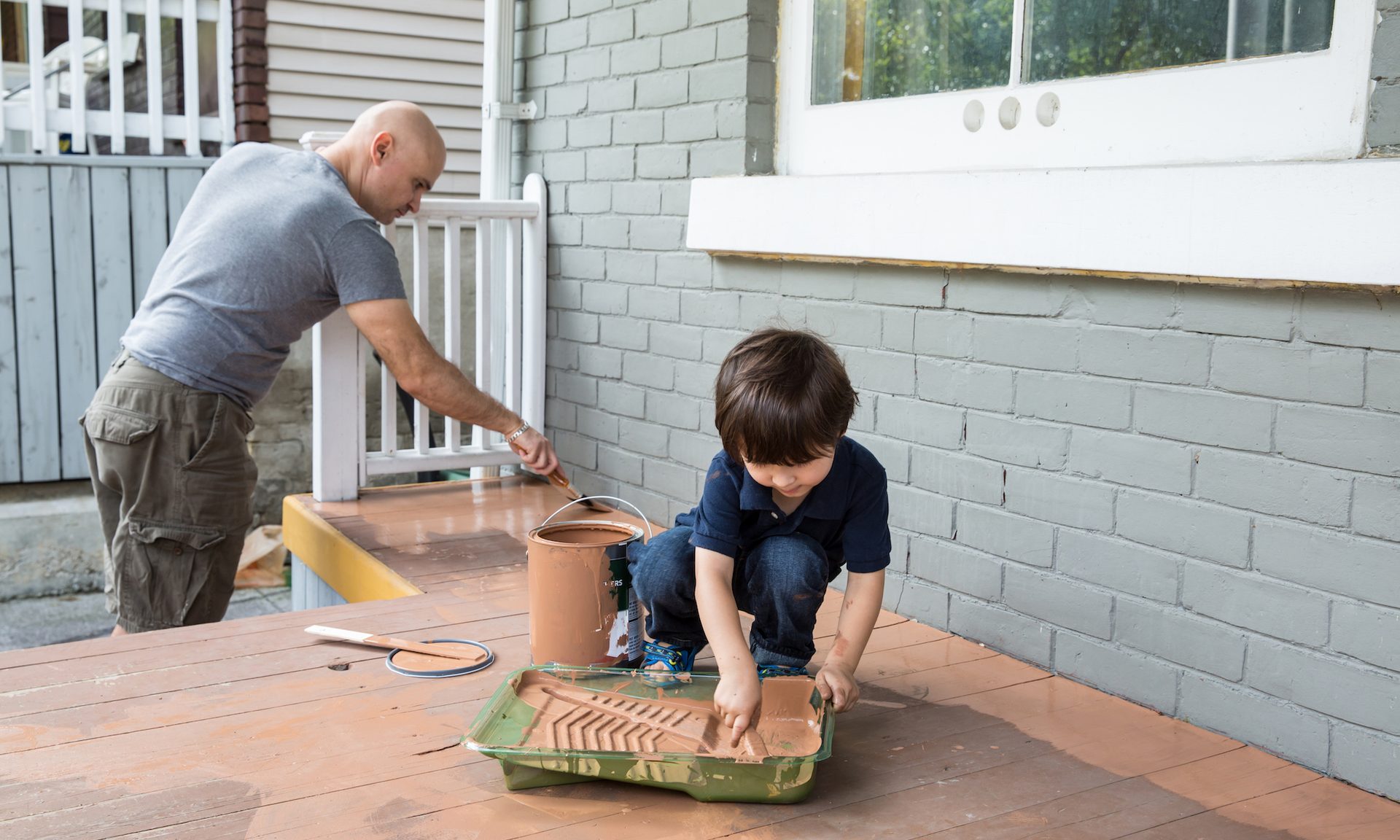How Much Does It Cost to Paint a House?
The average cost to paint the interior of a house is about $2,000. The average cost to paint the exterior is just over $3,000.

Some or all of the mortgage lenders featured on our site are advertising partners of NerdWallet, but this does not influence our evaluations, lender star ratings or the order in which lenders are listed on the page. Our opinions are our own. Here is a list of our partners.
A new coat of paint can go a long way to update and refresh your home. While painting is something that many homeowners can do themselves, you may choose to hire a professional instead.
According to Angi and Home Advisor, you can generally expect to pay between $967 and $3,076 to have the interior of your house painted, with the average homeowner spending $2,014. It costs an average of $2 to $6 per square foot, depending on if walls, trim and ceilings are included in the project.
An exterior paint job costs more, ranging from $1,819 to $4,551 with an average cost of $3,178. An additional story adds to labor costs, and the type of siding can make a big difference in price.
Advertisement



HELOC & Home Equity Loans from our partners

on FourLeaf Federal Credit Union
FourLeaf Federal Credit Union 

Min. credit score
670
Max. loan amount
$1,000,000

on Achieve
Achieve 

Min. credit score
600
Max. loan amount
$300,000

on Figure
Figure 

Min. credit score
600
Max. loan amount
$750,000
Interior cost estimates
You can typically expect to spend between $1,000 and $6,000 per 1,000 square feet of interior space. Here are some estimates of the cost to have a professional paint the interior of your home based on its size in square feet.
| Home size | Interior painting cost |
|---|---|
| 1,000 square feet | $2,000 to $6,000 |
| 1,500 square feet | $3,000 to $9,000 |
| 2,000 square feet | $4,000 to $12,000 |
| 2,500 square feet | $5,000 to $15,000 |
| 3,000 square feet | $6,000 to $18,000 |
Exterior cost estimates
You can typically expect to spend between $1,500 and $4,000 per 1,000 square feet of exterior space. Here are some estimates of the costs to have a professional paint the exterior of your home based on its size in square feet.
| Home size | Exterior painting cost |
|---|---|
| 1,000 square feet | $1,500 to $4,000 |
| 1,500 square feet | $2,250 to $6,000 |
| 2,000 square feet | $3,000 to $8,000 |
| 2,500 square feet | $3,750 to $12,000 |
Breaking down the cost to paint a house
Most expenses fall into two main categories.
1. Labor costs
The biggest cost is labor. Most of the painter’s time is spent preparing the surface so the paint will adhere well, and the job will last. Your biggest potential savings come from controlling or reducing how much time a professional painter has to spend on cleaning, patching, sanding, caulking and painting.
2. Cost of paint and materials
Paint costs anywhere from $20 to $70 or more per gallon. Lowe’s estimates that one gallon of paint will cover 350 to 400 square feet of interior space.
Pricing depends on the sheen, the grade you’ve chosen and any special features. Some paints, for instance, are mold-resistant, while others suppress smells or require fewer coats. Some have a lifetime warranty.
Paints with warranties, however, may not be worth a higher price. In Consumer Reports tests approximating nine years of wear, only a few exterior paints and stains with lifetime warranties held up well.
Primer can add up too: a gallon can of primer is typically between $20 and $75, which Lowe’s estimates will cover around 200 to 300 square feet of space.
Other materials — including tarps, tape, brushes, rollers and other equipment and supplies — can range in cost, depending on your needs — some brushes and rollers only cost a few dollars, while a ladder can cost over $100.
Tips for saving on house-painting costs
With labor your biggest expense, you can save the most by containing how many hours a painter spends on the job. And there are other ways to pare back costs, too. Follow these pro tips for maximizing your savings:
1. Do all or some of the work yourself
You can save a bundle by doing the labor yourself. According to Angi, labor can cost 75% to 95% of the total cost of a professional paint job. If you DIY, the biggest expense will be paint, primer and renting or buying any supplies or equipment such as caulk, brushes, rollers, tarps and ladders.
High-quality paints may be more expensive by the gallon, but you may get more coverage and durability out of them than you would with a paint of inferior quality. This means that you can use less paint and finish the job faster, saving money on the project overall.
3. Prep the space yourself
If you do go with a professional and the painter has to do a lot of prep work before painting, this can inflate the cost of the project. If you’re hiring a painter, ask if you can reduce the cost of labor by doing some tasks yourself. For example:
- Trimming shrubs
- Moving furniture and clearing a perimeter for painters to work
- Removing and reinstalling the outlet covers, switch plates and doorknobs
- Prep work like patching, sanding and scraping, if you have the skills
4. Get competing bids
Before hiring a painter, getting multiple estimates can help you find the best deal. Find recommended painters from friends, or search online for painters near you who are licensed, where required, and insured. You could use digital review platforms like Yelp or Angi, or you could even visit your local paint store and ask for recommendations.
Ask a painter to specify how many hours will be spent on preparation and painting, the names of products to be used, how many coats will be applied and the cost for any additional coats. Once you’ve made your choice, solidify the deal in writing with a contract.
5. Trim the scope of the job
Before signing the contract, look through it for ways to trim aspects of the job that aren’t important to you. For example, you might forgo repainting ceilings or closet interiors to save on paint and labor.
6. Time your project
You may get the best deal by hiring professionals outside of the peak season in your area. However, you should also consider if hiring during inclement periods — say, the dead of winter in the Midwest — will add to labor expenses.
Article sources
NerdWallet writers are subject matter authorities who use primary,
trustworthy sources to inform their work, including peer-reviewed
studies, government websites, academic research and interviews with
industry experts. All content is fact-checked for accuracy, timeliness
and relevance. You can learn more about NerdWallet's high
standards for journalism by reading our
editorial guidelines.
More like this
Related articles







